HOME > 今月の特集 > traditional craft "Swordsmith, Hidari-Hisasaku"
|
  |
 |
|
 |
If you cross "Kachidoki-bashi Bridge" on river Sumida from Tsukiji direction, you will be in Tsukishima. The area was reclaimed in the Meiji Era, so that it was named "Tsukishima", "the reclaimed island". It used to be an "Ishikawa-jima shipbuilding town" where dockyard hands were living today. The same area is filled with the number of Monja-yaki restaurants in stead, but an old town atmosphere is still there.
We interviewed Maestro. Takanobu Ikegami, the 2nd owner of the "Swordsmith, Hidari-Hisasaku". |
 |
 |
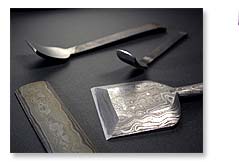
|
| About Edo Smithery |
 |
 |
|
Smithery have specialties such as, Japanese sword, horseshoe, or scissors. Our specialty is Chisels, planes, and other professional knives for carpenters, furniture builders for temples, and shrines, Noh mask craftspeople or musical instrument craftspeople who expects high quality works. There was a time when smitheries were gathered to create swords or horseshoes for Edo Shogunate since we inherit Edo Smithery up until today.
|
|
|
 |
| Until I became the 2nd owner |
 |
The store was founded in 1922 by my father, Hisasaku. He became pupil for the master. Hisahiro Hidari who were known for his sharp and stylish works. My father succeeded the name "Hisasaku" from the master.
Looking at founder's works naturally became his pupil after graduated from higher elementary school. The founder taught me skills strictly and affectionately as I was passing down the store and techniques. I was born in 1924 and turn to be 81 this year. I am so grateful to have served my role over 65 years by now.
|
|
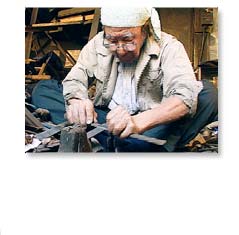 |
 |
|
 |

|
| My Pride as a Smithery |
 |
 |
|
Demands for smithery decreased ever since carpenters started to use automated tools in stead of hand made tools. All Edo Smitheries are gone except us. Today, we receive orders from all over the place. The order comes from Japan but also from overseas.
Especially, most orders come from temple and shrines carpenters in Kyoto or Nara after they used our knives. One day, one of the famous temple carpenters came the shop and said, "We are going to repair five storied pagoda of the Yakushiji temple. We do not know anybody else but only you can make the tool for the repair. Please make one for us.", it was one of the greatest honor of my life. Craftsmen do their jobs faithfully, and I do my job faithfully too. I think this way, I am proud of being a smithery.
|
|
|
 |
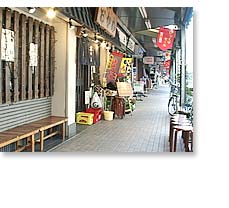
|
| Hand down the craftsmanship to the kids of Tsukishima |
 |
 |
|
I am a Tsukishima kid who was born and raised in this town. I have spoken about the craftsmanship for Tsukishima elementary school kids so many times already. There were times that kids gave me their drawings or compositions, and some of them stopped by store. They also check how I am doing after they turn to high school girl. I am so thankful for those kids from the neighborhood to get to know who I am, and to be interested in what I am doing.
Fortunately, my old son Nobuyuki inherits my work. My most happiness today at the age of 81 is to be able to do a Smithery work together with my son.
|
|
|
|
 |
 |
 |
 |
| |
 |
|
 |
Smithery Hisasaku
They sell order-made chisels, planes and knives for amateurs to professionals. Large-sized knife for 18,000 yen, small-size for 7,000 yen, double-edged knives for 12,000 yen and others all includes tax and delivery fee. Since they are totally order-made styles, you can order in details. Online order is also available.
|
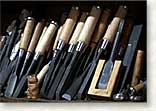 |
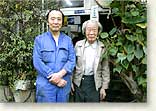 |
Address: 2-17-3 Tsukishima, Chuo-ku
Phone: 03-3531-1625
FAX: 03-3531-1625
URL:http://www1.odn.ne.jp/hidari/
E-mail:ccg21460@nyc.odn.ne.jp
Access: Tsukishima station (Yurakucho line, Oedo line)
Office hours: 07:00-22:00 (Please try to come after 13:00, or call us and we will be open for sure) |
|
|
 |
 |
 |
|
 |
|
 |
 |
 |
 |
|
 |